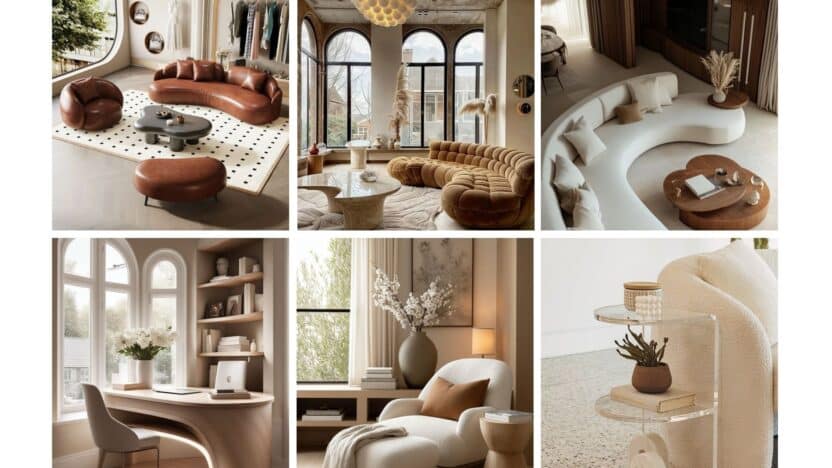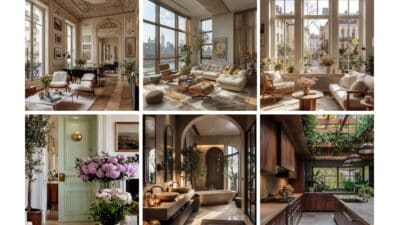Curved furniture has become one of the most noticeable shifts in interior design, moving away from sharp lines toward softer, more inviting shapes. These pieces bring warmth and flow into your space, making everyday living areas feel more comfortable and balanced. You can use curves to create a home that feels both stylish and welcoming without sacrificing function.
As you explore this trend, you’ll see how curved sofas, rounded tables, and sculptural seating can transform the way you arrange and enjoy your rooms. Each example highlights how form and comfort work together, giving you practical ideas to refresh your space with pieces that feel modern yet timeless.
1) Curved velvet sofas for a cozy living room
A curved velvet sofa can instantly soften the look of your living room. The rounded shape encourages a natural flow in the space while the velvet fabric adds a touch of comfort and warmth. You’ll notice how it makes the room feel more inviting without overwhelming it.
If you have a small space, a two-seater curved velvet sofa can fit neatly without taking up too much room. In larger living rooms, a bigger sectional version can anchor the seating area while still keeping the layout open and relaxed.
Velvet also comes in a wide range of colors, so you can choose a neutral shade for a calm look or go bold with jewel tones. This flexibility makes it easy to match your sofa with your existing décor.
Because of its curved design, the sofa naturally creates a cozy spot for conversation. You and your guests can sit comfortably without feeling too spread out, which makes it perfect for casual gatherings.
Adding a curved velvet sofa can also bring a subtle sense of elegance. It combines the softness of fabric with the sculptural quality of curved furniture, giving your living room both comfort and style.
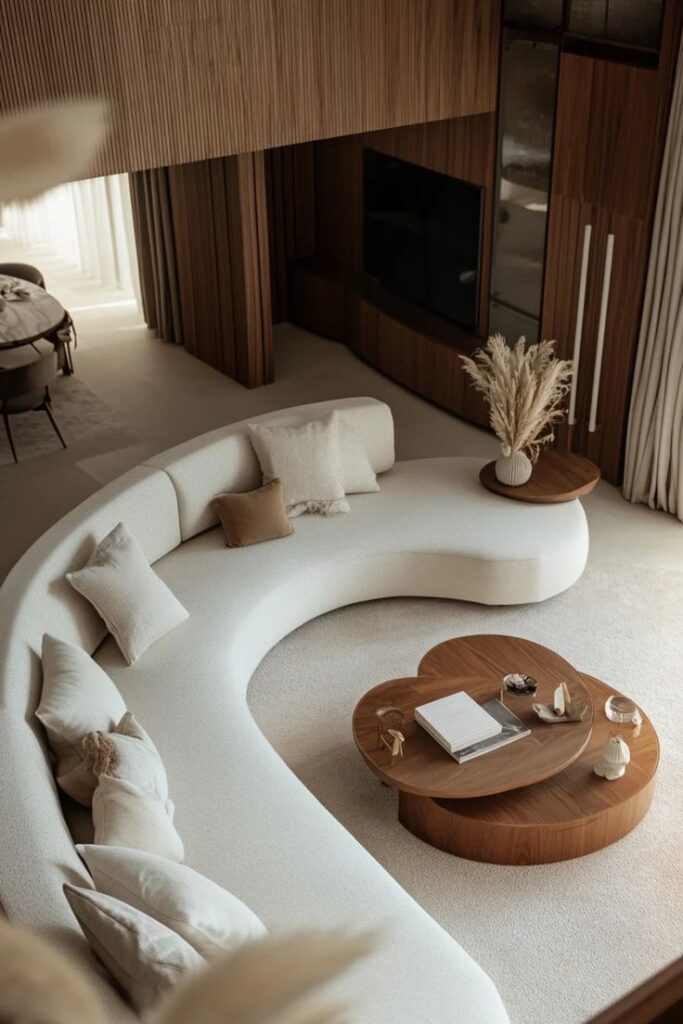
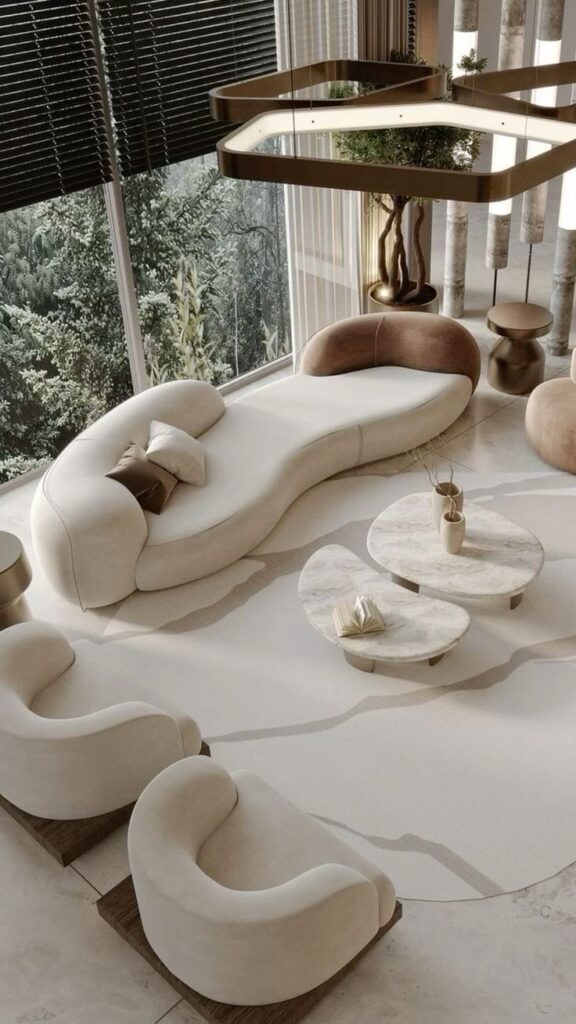
2) Round coffee tables with wooden accents
You can bring warmth into your living room by choosing a round coffee table with wooden accents. The curved shape softens the layout, while the wood tones add a natural touch that feels inviting.
If you prefer a modern look, pair a wooden top with sleek metal or glass elements. This mix balances organic texture with clean lines, making the table fit into both contemporary and transitional spaces.
For a cozier style, a fully wooden round table works well with sofas in fabric or leather. The grain details create subtle character without overwhelming the room.
You can also find designs with two tiers or hidden storage. These keep your space organized while still maintaining the soft, rounded shape.
When styling, try adding a small plant or stack of books to highlight the wood finish. This keeps the table functional while letting the natural material stand out.
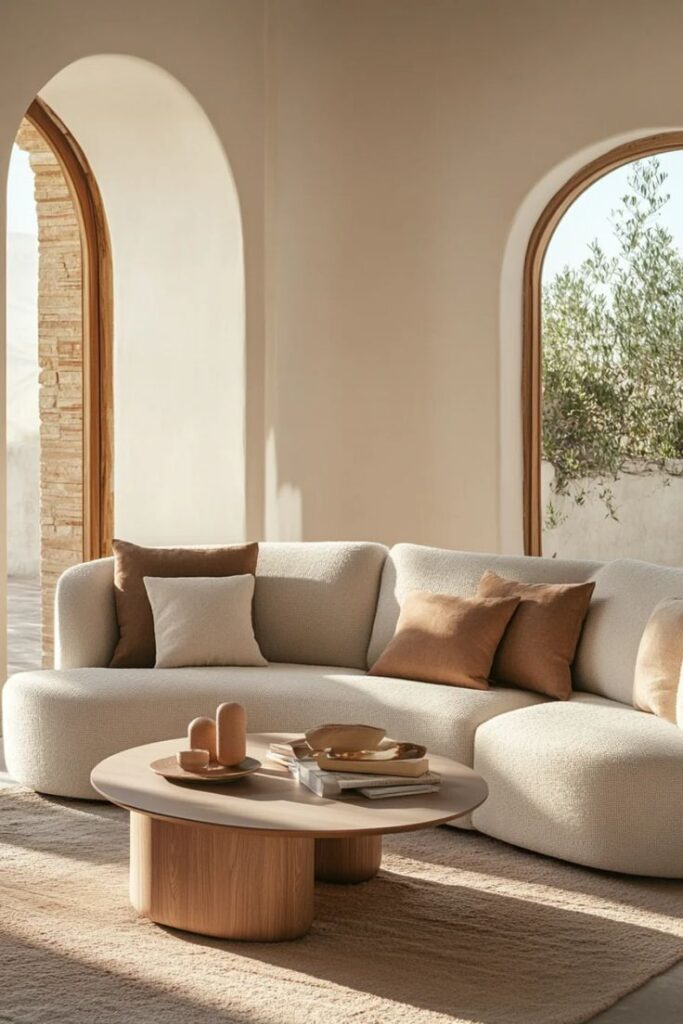
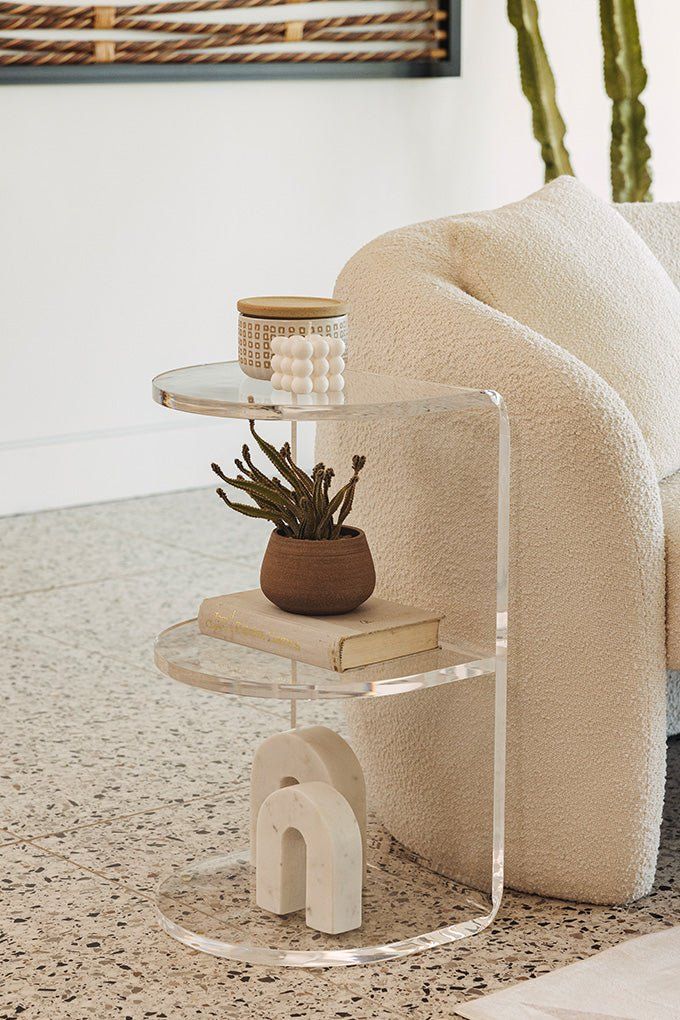
3) Sculptural armchairs with soft edges
When you choose a sculptural armchair with rounded lines, you bring comfort and style into your space. The softened edges make the chair feel more inviting compared to sharp, angular designs.
You’ll notice how curved arms and backs can create a more relaxed atmosphere. These shapes help balance out straight lines from tables, shelves, or architectural details in the room.
Many designers highlight armchairs with bouclé or textured fabrics to enhance the sculptural effect. The combination of soft curves and tactile materials makes the chair both practical and visually appealing.
You can use a single sculptural armchair as a statement piece or pair two for symmetry. Either way, the gentle curves add a sense of flow that works well in both modern and classic interiors.
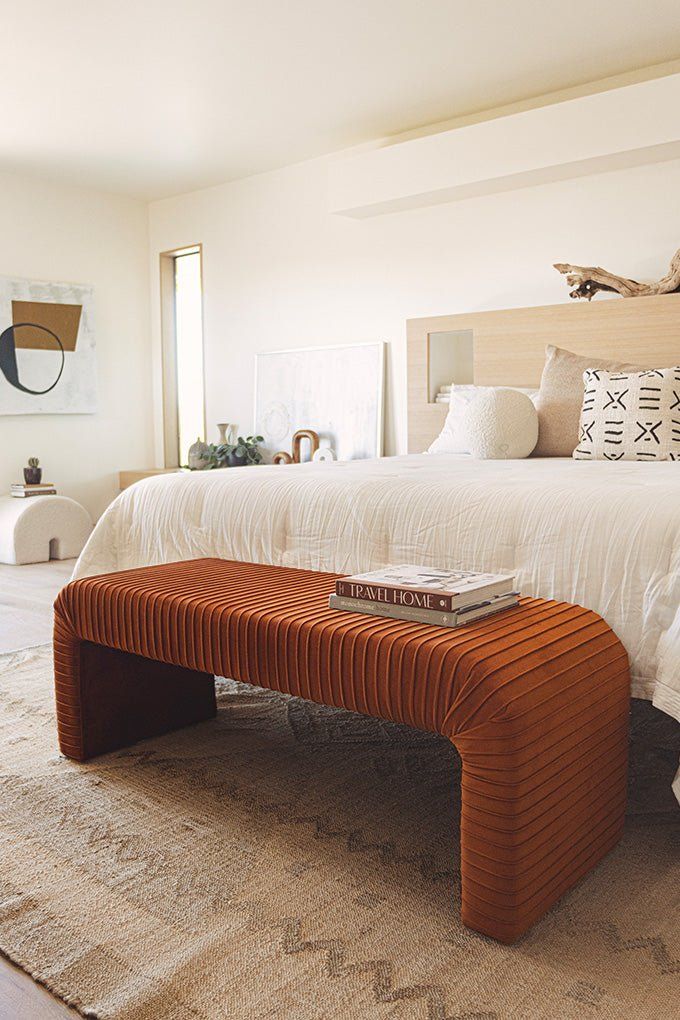
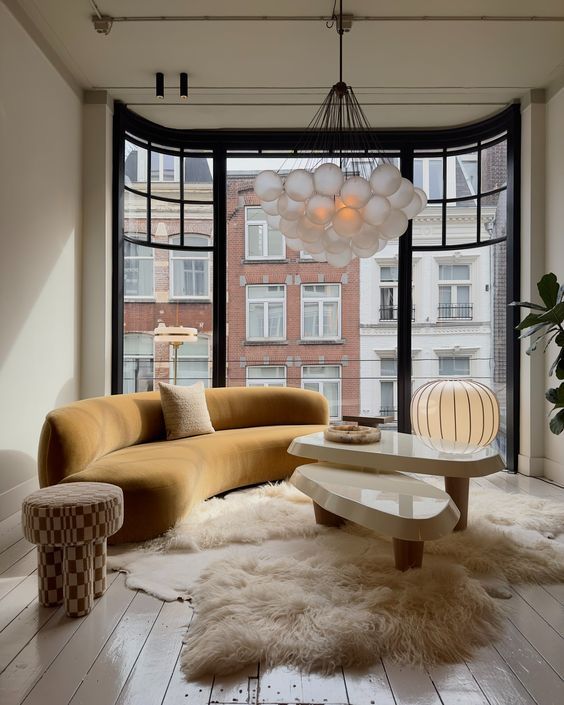
4) Circular ottomans as versatile seating
You can use a circular ottoman as more than just a footrest. Its shape makes it easy to place in the center of a room or tuck beside a chair when you need extra seating. Because it has no sharp edges, it feels inviting and works well in both small and large spaces.
You’ll find that many circular ottomans double as coffee table alternatives. Place a tray on top, and you instantly have a surface for drinks, books, or décor. When guests arrive, you can move the tray aside and turn it into an extra seat.
Some designs include hidden storage, which helps you keep blankets, magazines, or remotes out of sight. This makes the ottoman practical without taking up more room than necessary. You get both function and comfort in one piece.
If you like rearranging your space, you’ll appreciate how lightweight and flexible most circular ottomans are. You can shift them around to suit different seating arrangements or conversations. This adaptability makes them a useful addition to almost any room.
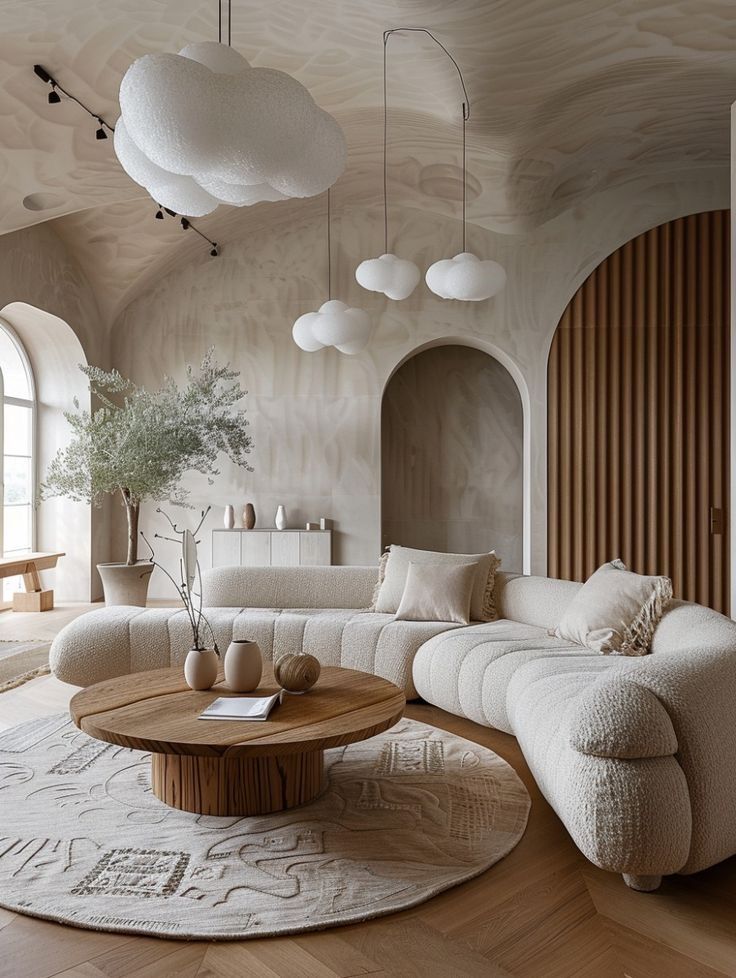
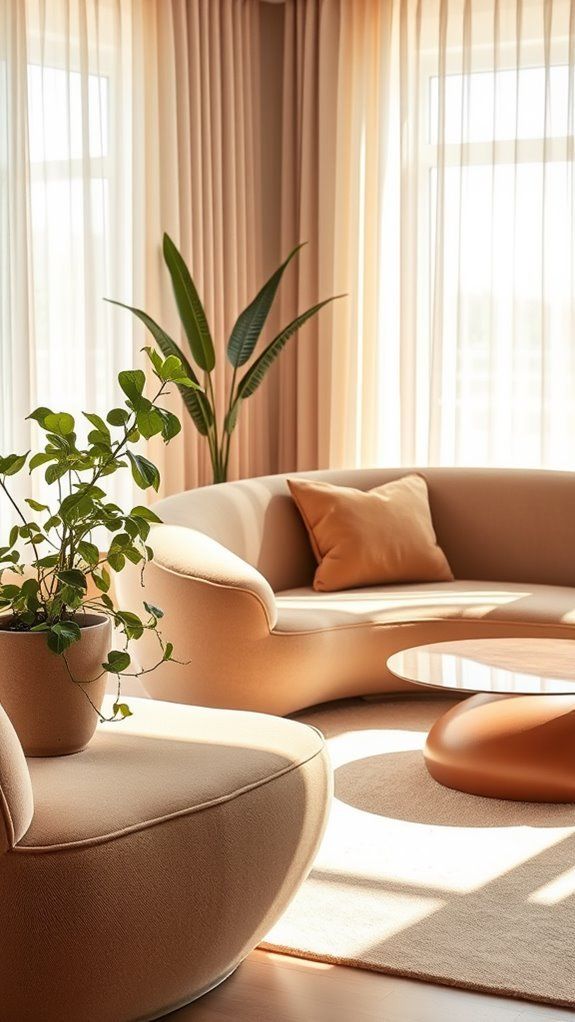
5) Curved-back dining chairs in leather
You can bring both comfort and style to your dining area with curved-back dining chairs in leather. The gentle curve supports your posture, while the leather finish adds a practical touch that’s easy to maintain.
When you choose leather, you get a material that pairs well with wood, metal, or glass tables. It works in modern dining rooms, but it also fits into more traditional spaces without looking out of place.
These chairs often come in neutral shades like black, brown, or ivory, making them easy to match with your existing décor. If you prefer a bolder look, you can also find options in deeper tones like burgundy.
The curved back design doesn’t just look good—it also makes long mealtimes more comfortable. You’ll notice the difference in support compared to flat-backed chairs, especially during gatherings or work-from-home use.
Whether you want a sleek contemporary edge or a classic feel, leather curved-back chairs give you flexibility. You can use them around your dining table, at a desk, or even as accent seating in another room.
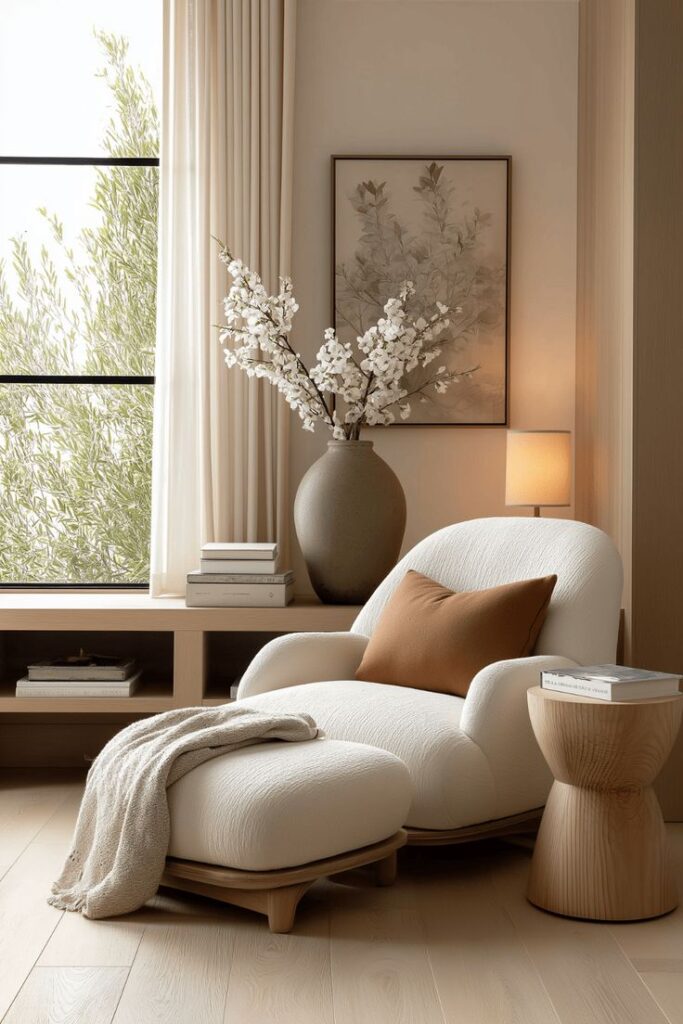
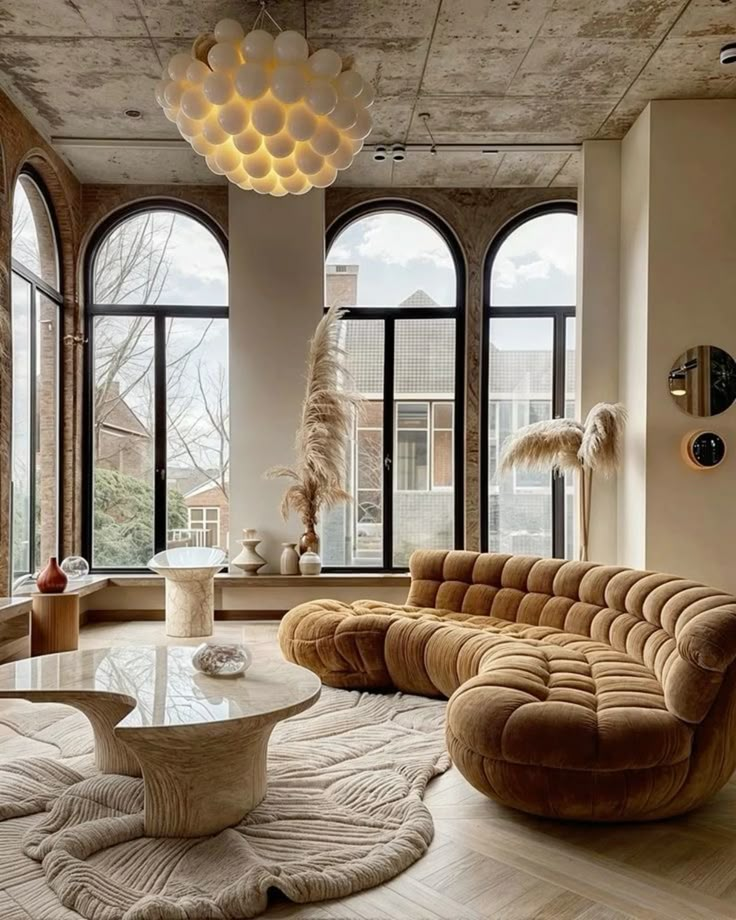
6) Organic-shaped wooden side tables
You can bring warmth and softness into a room with organic-shaped wooden side tables. Their rounded edges and flowing lines feel more natural than sharp corners, making them easy to blend with both modern and traditional settings.
When you choose one of these tables, look for solid woods like oak, walnut, or ash. The natural grain adds character, while the curved form keeps the piece from looking too heavy.
You might place a small, pebble-shaped table beside a sofa or armchair. Its smooth surface is practical for holding a lamp or cup, while the irregular outline adds interest.
If you prefer a more sculptural look, try a side table with an asymmetrical base. These designs often mimic natural forms, such as stones or tree trunks, giving your space a relaxed, organic feel.
Pairing two or three tables of different heights can also work well. This creates a layered look, while the rounded shapes keep the arrangement cohesive and inviting.
By incorporating organic-shaped wooden side tables, you add both function and a soft, natural aesthetic to your home. They’re versatile enough for living rooms, bedrooms, or even reading nooks.
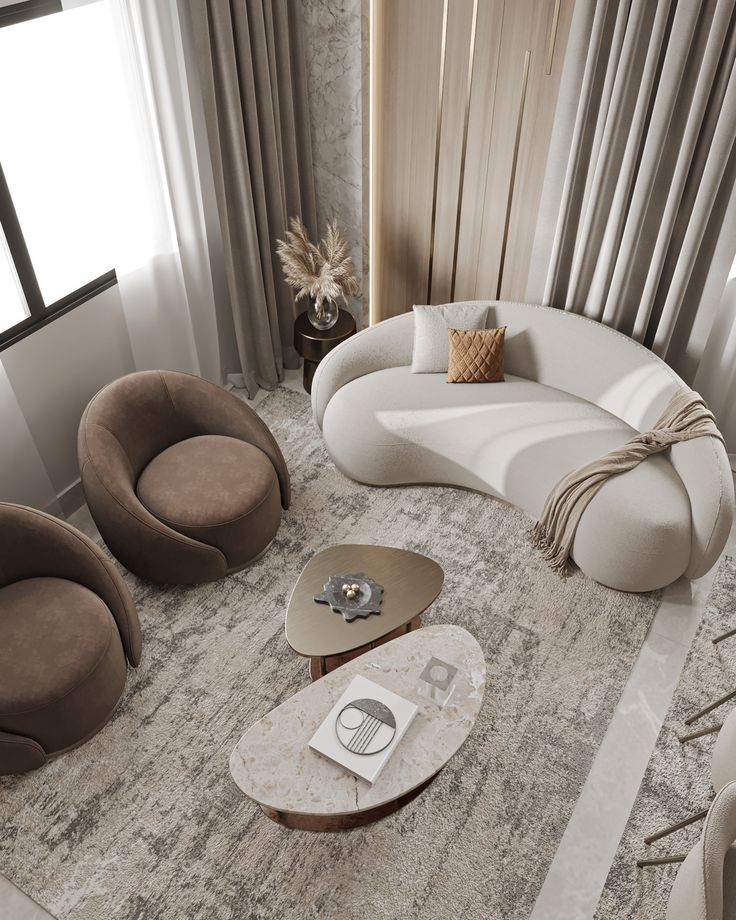
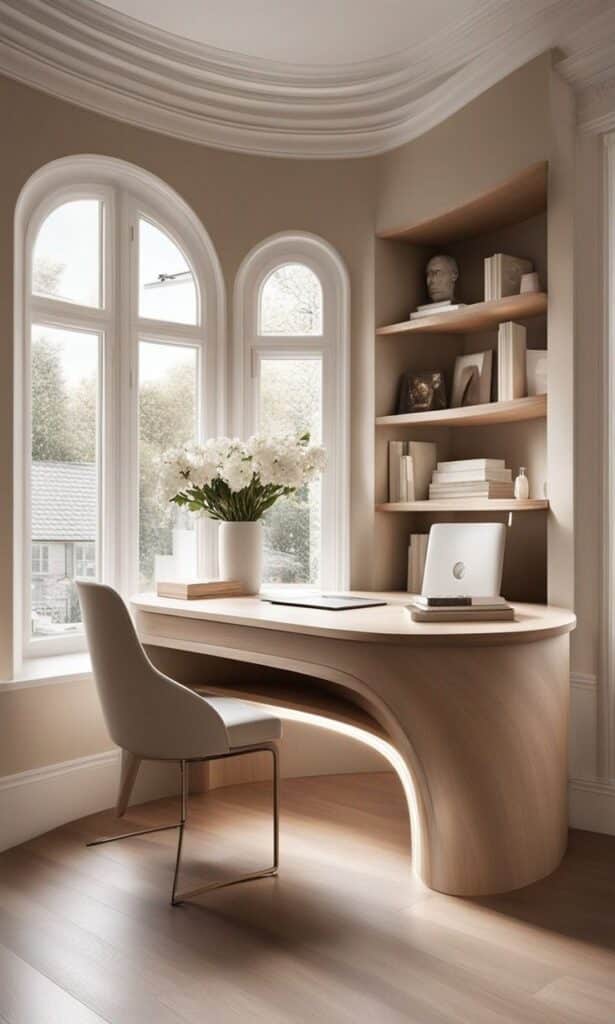
7) Rounded-edge media consoles
A rounded-edge media console gives your living room a softer, more approachable look. Instead of sharp corners, you get smooth curves that feel easier on the eyes and safer in busy spaces.
You can use one to balance out other furniture with straight lines. The rounded profile helps the console blend in with both modern and traditional styles.
These consoles also work well in smaller rooms. Their curved edges take up less visual space, making the area feel more open and less crowded.
You’ll find options with arched details, rounded corners, or fully curved silhouettes. Each variation adds a subtle design touch without overwhelming your setup.
If you like to decorate, the soft edges create a nice backdrop for plants, lamps, or artwork. The shape lets accessories stand out while keeping the overall look calm and cohesive.
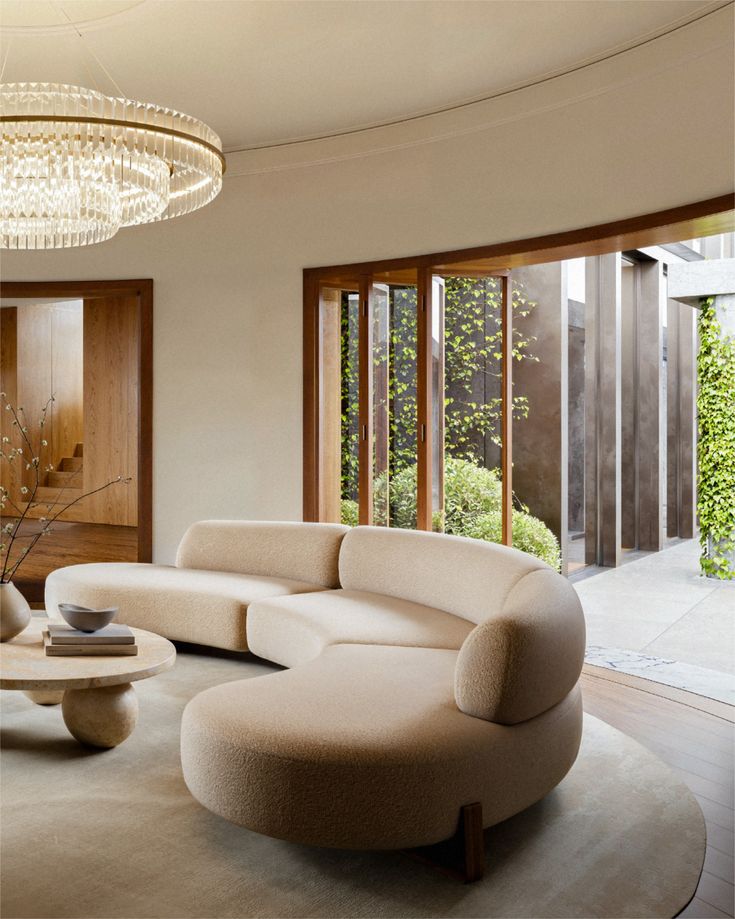
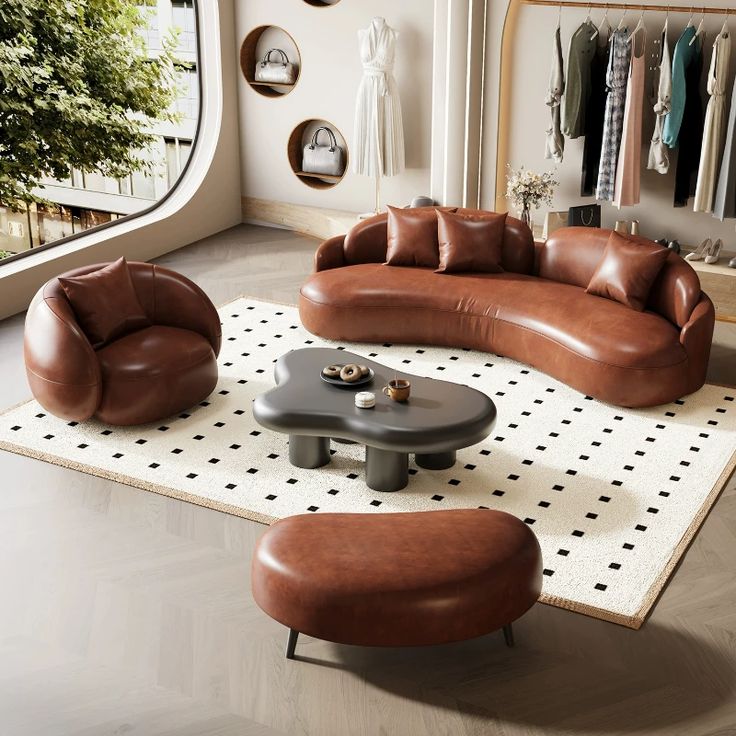
8) Soft, flowing sectional sofas
When you choose a curved sectional sofa, you bring both comfort and style into your living room. The rounded shape naturally creates a more welcoming layout that feels less rigid than straight-edged seating.
You’ll notice how the soft lines encourage conversation by subtly drawing people toward the center. This makes it easier to create a cozy, social atmosphere without forcing the arrangement.
Curved sectionals also work well in large or unusual spaces. Their flowing shape can help balance asymmetry, fill corners gracefully, or complement round and oval tables.
If you want to highlight the design, place your sectional in the middle of the room. Pairing it with a circular rug or round coffee table helps tie the look together.
You can find sectionals in different styles, from sleek modern designs to plush retro-inspired options. Upholstery choices like velvet, linen, or corduroy let you match the sofa to your preferred mood and texture.
Because of their sculptural presence, curved sectionals often act as a focal point. You don’t need much extra decoration to make the space feel complete. Instead, let the shape speak for itself and build your room around it.
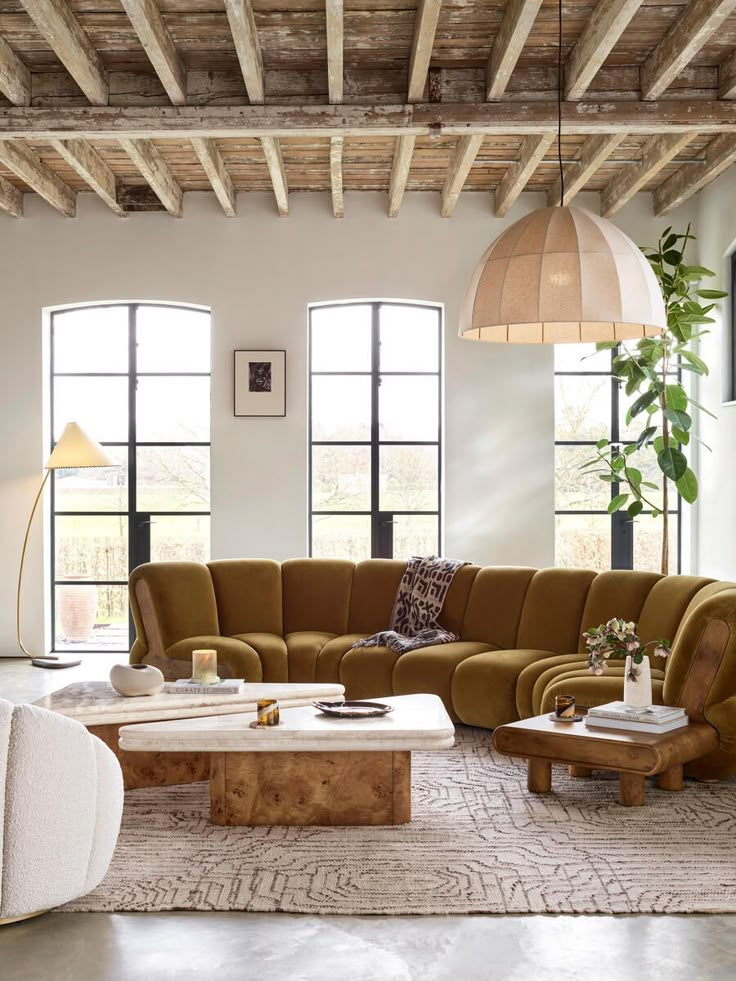
9) Curved chaise lounges for relaxation
A curved chaise lounge gives you a comfortable spot to stretch out and rest. The soft lines and rounded edges make it feel inviting, whether you place it in a living room, bedroom, or reading nook.
You can choose from different designs, including velvet finishes, ergonomic shapes, or more traditional upholstered styles. These options let you match the lounge to your space while keeping comfort in mind.
Because of the curved form, you get better support for reclining compared to flat or rigid seating. This makes it easy to relax with a book, take a nap, or simply enjoy some quiet time.
Adding a curved chaise also changes the look of a room. The flowing shape softens sharp corners and brings a sense of calm to the overall design.
If you want a piece that feels both practical and stylish, a curved chaise lounge can fit that role. It offers a place to unwind while also serving as a focal point in your home.
10) Swivel chairs with smooth contours
You can bring both comfort and flexibility into your space with swivel chairs that feature rounded, flowing lines. Their smooth contours soften the look of a room and create a welcoming seat you can easily turn toward any direction.
These chairs work well in living rooms, reading nooks, or even bedrooms. Instead of rigid angles, the curved design adds a sense of ease that pairs nicely with modern interiors.
You’ll also find that many swivel chairs come in oversized shapes, making them ideal for curling up with a book or relaxing in front of the TV. The rounded edges prevent them from feeling bulky, so they still fit into smaller spaces.
Materials like bouclé, velvet, and woven fabrics are common options, giving you plenty of ways to match them to your existing décor. The swivel base adds practical movement while keeping the style clean and simple.
By choosing a chair with smooth contours, you can create a cozy spot that feels both functional and stylish. It’s a piece that adapts to different layouts without losing its inviting shape.
Why Curved Furniture Is Trending
Curved furniture has gained momentum because it blends comfort with style, softens rigid layouts, and adapts well to the way homes are designed today. It also creates a more inviting atmosphere by replacing sharp angles with smooth, approachable forms.
Influence of Modern Interior Design
You’ve probably noticed how design trends have shifted away from stark minimalism toward warmer, more livable spaces. Straight lines and boxy silhouettes once dominated, but now designers favor organic shapes that feel less rigid. Curved furniture fits perfectly into this direction because it introduces balance and flow without sacrificing function.
In 2025, you see curved sofas, beds, and consoles becoming centerpieces. They stand out not only for their sculptural appeal but also for their ability to complement other key trends, such as sustainable materials and modular layouts.
Another reason for the rise is technology. With AR visualization tools, you can preview how curved pieces will look in your space, making them easier to adopt. This practical advantage has helped the trend expand beyond high-end interiors to more accessible home design.
Psychological Impact of Soft Lines
Curved furniture does more than look stylish—it changes how you feel in a room. Rounded edges and flowing shapes naturally create a sense of calm because your eyes don’t stop at sharp corners. Instead, they follow smooth lines, which makes spaces feel more relaxed and connected.
You may also find that curved pieces encourage comfort and conversation. Sofas with rounded backs or chairs with enveloping forms invite you to sit longer and interact more freely. This is why they work especially well in living rooms and lounges.
Designers often describe curves as “human” because they mirror natural forms like waves, arches, and shells. When you bring these shapes indoors, you create an environment that feels approachable and less formal compared to angular furniture.
Integration With Open-Concept Spaces
If your home has an open floor plan, curved furniture can help define areas without adding walls. A rounded sofa, for example, can subtly separate a living zone from a dining area while still keeping the space visually connected.
The soft edges also improve flow. Instead of blocking pathways with sharp corners, curved profiles guide movement more naturally. This makes your rooms feel larger and easier to navigate.
You’ll also notice how curved pieces complement architectural features like arched doorways or circular lighting fixtures. By echoing these shapes, your furniture looks intentional rather than added on. This integration is one reason curved designs feel so at home in modern layouts.
Tips for Styling Curved Furniture
Curved furniture works best when you create balance with surrounding shapes, use colors that enhance its form, and arrange it to guide the eye naturally through the room. Paying attention to these details helps your space feel cohesive without overwhelming other design elements.
Balancing With Angular Elements
If you fill a room with only rounded pieces, the space can feel heavy or monotonous. You need contrast to highlight the curves. Straight lines, sharp edges, and structured accents provide that balance.
Pair a rounded sofa with a rectangular coffee table. Add a square rug under a circular dining table. These combinations let the curved forms stand out while keeping the space visually stable.
You can also use shelving, artwork, or lighting with geometric outlines. A grid-style bookshelf or a linear floor lamp next to a curved chair creates harmony without competing for attention.
Think of it as a mix-and-match approach. Rounded edges bring softness, while angular accents add structure. Together, they prevent the room from leaning too far in one direction.
Choosing Complementary Colors
Color plays a big role in how curved furniture feels in your space. Softer shades like beige, sage, or muted blues highlight the organic nature of rounded pieces. Bold colors, on the other hand, can make curves feel more dramatic and sculptural.
Use a neutral backdrop if you want your curved sofa or chair to be the main focal point. For example:
- Neutral walls + curved navy sofa = strong centerpiece
- Soft beige rug + rounded wood table = grounded and calm
If you prefer a layered look, combine tones within the same family. A blush-toned chair with a terracotta throw pillow feels cohesive without being flat.
Avoid mixing too many bright colors with heavily curved pieces. The shapes already draw attention, so keeping the palette controlled helps the room feel intentional.
Maximizing Visual Flow
Curved furniture naturally guides the eye, so placement matters. Arrange rounded pieces to encourage movement through the room rather than blocking pathways. A curved sectional, for example, works well in a corner because it softens the angle and directs traffic smoothly.
Think about how people enter and move around the space. Position an arched chair slightly angled toward a walkway instead of facing directly forward. This creates a more open and welcoming feel.
You can also use round rugs, circular coffee tables, or arched mirrors to extend the flow. These additions echo the curves and help the eye travel in a continuous line.
Pay attention to spacing. Leave enough room between pieces so the curves don’t feel cramped. When arranged thoughtfully, curved furniture makes the room feel more fluid and connected.


